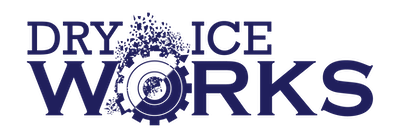Plastics Manufacturing
Clean molds while they’re still hot and online.
- Increase Productivity
- Improve Quality
- Increase Equipment Lifespan
- Reduce Avoidable Costs
Reduce Downtime By 80% By Cleaning Molds While They Are Still Running
With dry ice cleaning, cleaning can be performed on-site and even while equipment is still operational, minimizing downtime and maximizing production output.
Need an ongoing maintenance plan? Learn more about creating a custom cleaning program you can count on.
Plastics Manufacturing Equipment
Plastics manufacturing facilities often encounter stubborn residues, mold buildup, and equipment contamination, leading to production inefficiencies and quality issues. Common equipment and cleaning challenges include:
Injection Molding Machines
Residue buildup, mold release agents, and polymer flash can accumulate on molds and affect production quality.
Blow Molds: Accumulation of polymer residues, mold release agents, and contaminants can impact the quality and consistency of blow-molded products.
Compression Molds: Residual polymers, mold release agents, and oxidation can adhere to compression molds, affecting mold integrity and product quality.
Urethane Molds: Sticky urethane residues and mold release agents can build up on urethane molds, leading to production defects and mold deterioration.
Textured Molds: Fine textures on molds can trap residues and contaminants, requiring specialized cleaning methods to ensure thorough removal without damaging the mold surface.
Medical Molds: Stringent cleanliness standards in medical manufacturing require precise cleaning of molds to prevent contamination and ensure product safety and compliance.
Technical Molds: Complex geometries and tight tolerances in technical molds demand thorough cleaning to maintain mold performance and product quality.
Extrusion Lines
Residual polymers, carbon deposits, and contamination on screws, dies, and barrels can hinder production efficiency and product quality.
Conveyor Systems
Dirt, grease, and polymer residues can accumulate on conveyor belts, rollers, and guides, causing operational disruptions and product contamination.
Molds and Tooling
Molded parts often require precise cleaning to remove residue, flash, and release agents without damaging delicate surfaces.
Cooling Towers
Scale, algae, and biofilm buildup can reduce cooling efficiency and pose sanitation risks.
Ovens
Residual polymers, oils, and other contaminants can accumulate on oven surfaces, affecting heat distribution and product quality. Proper cleaning of oven interiors is essential to ensure consistent heating and prevent contamination of baked or cured products.

Why Choose Dry Ice Works for Removing Build-up of Plastics in Manufacturing Equipment?
Here’s why businesses across the plastics manufacturing industry are turning to dry ice blasting:
No Area Left Untouched
Our method can treat hard-to-reach areas that are often missed in the cleaning process, such as the tight angles without damage to the surface integrity.
Water-Free
Dry ice blasting eliminates the need for water in the cleaning process, reducing the risk of moisture-related damage to sensitive equipment and minimizing cleanup time and costs.
Minimal Downtime
Dry ice cleaning eliminates the need for disassembly of equipment, even while it’s online, reducing downtime and increasing productivity.
Non-abrasive
Dry ice blasting effectively removes residues and contaminants without causing damage to delicate plastic surfaces, preserving the integrity of molds, dies, and other equipment.
Cost-Effective
Our streamlined process minimizes your labor expenses and gives a more thorough cleaning at a fraction of the cost of other cleaning methods.
Environmentally Friendly
No harmful chemicals or secondary waste are produced during the process.
See Dry Ice Blasting In Action
Dry ice blast cleaning injection molds. Plastic and rubber molders love that our technique removes surface residues without creating secondary waste and won’t harm mold surfaces.

F.A.Q.
These are just a few of the commonly asked questions about dry ice blasting in the plastic manufacturing industry. If you have any specific questions or would like to learn more about how dry ice blasting can benefit your business, please contact us.
What types of equipment and surfaces in the plastic manufacturing industry can be cleaned using dry ice blasting?
How does dry ice cleaning compare to traditional cleaning methods in the plastic manufacturing industry?
Dry ice cleaning offers several advantages over traditional cleaning methods such as manual scrubbing, solvent cleaning, and abrasive blasting. Unlike these methods, dry ice blasting is non-destructive, non-abrasive, and environmentally friendly. It does not involve the use of water, chemicals, or abrasive media, making it ideal for use in plastic manufacturing environments. Dry ice blasting is also faster and more efficient, reducing downtime and labor costs associated with manual cleaning. View Comparison Chart
Can dry ice blasting remove stubborn contaminants such as mold release agents and polymer residues from plastic manufacturing equipment?
Is dry ice blasting safe for use on plastic manufacturing equipment and delicate plastic surfaces?
Related Services
Equipment & Tool Cleaning
A fast way to clean equipment, removing built-up contaminants without disassembling the machinery.
Paint Preparation
We remove old paint, rust, and other surface contaminants, providing a clean and smooth surface.
Facility Cleaning
We create a tailored cleaning strategy, ensuring the ongoing cleanliness, efficiency, and safety of your facility.




